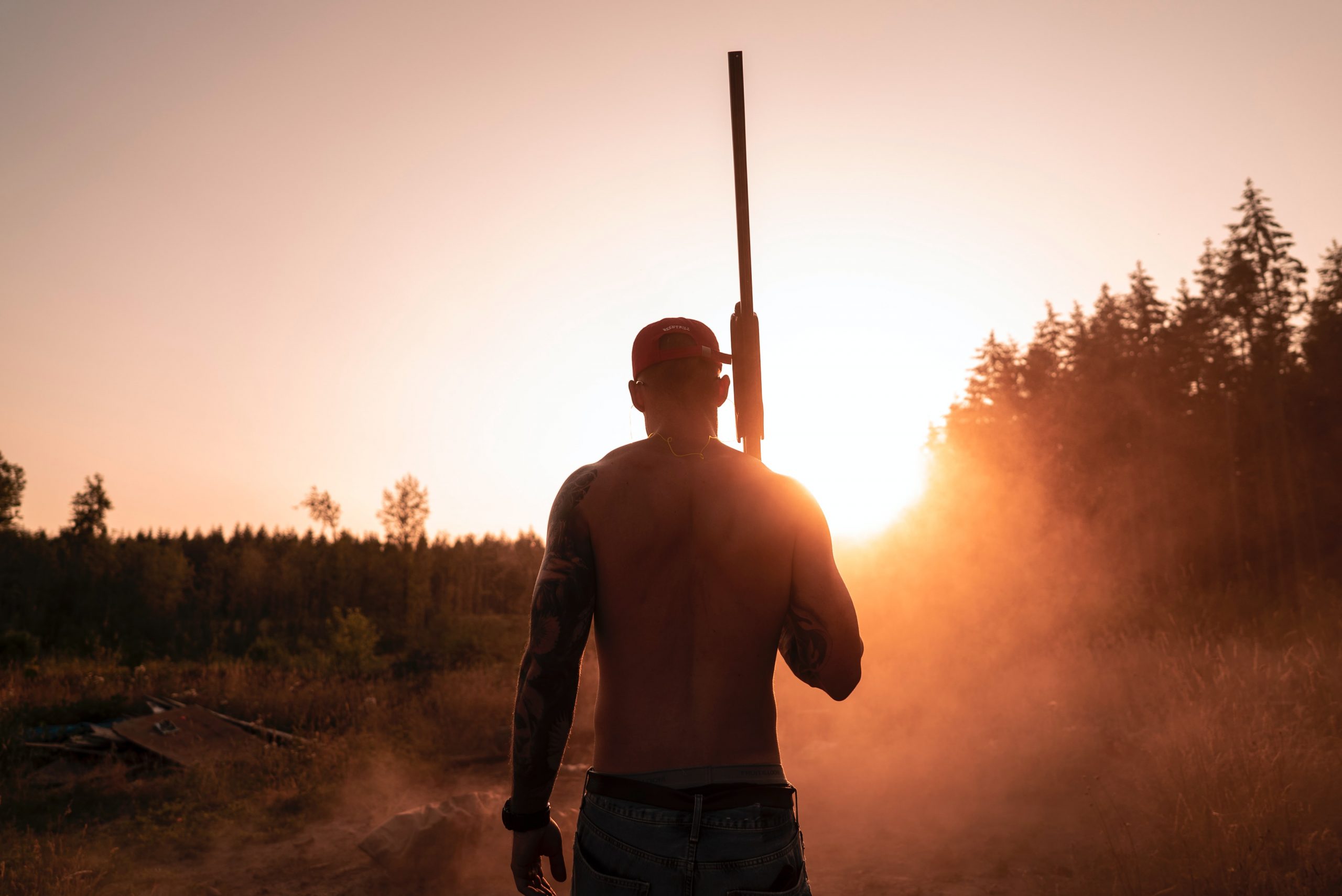
by DGR News Service | Aug 1, 2020 | Women & Radical Feminism
This excerpt is taken from the 1974 book Birth Without Violence by Frederick Leboyer. Leboyer was a French obstetrician opposed to the violence and harm the medical model enacted on women and babies at birth.
In Birth Without Violence, Leboyer describes the violence of birth, offering the babies perspective. He demonstrates how traumatic and distressing medicalized birth can be. He advocates for women’s intuition, for medical professionals listening to women, and for a quiet, loving delivery.
This book could be considered relevant to birth everywhere or perhaps an analogy outlining how all live can be respected, human and non-human — a description of how we can open our eyes to the possibility of living without violence of any kind to our wild earth.
Birth Without Violence
By Frederick Leboyer
What more can be said?
Only one thing.
Try.
Everything that has been said is so simple that one
feels embarrassed at having dwelt on it at such length.
Perhaps we have lost our taste for simplicity.
Once we’ve understood
the point of this whole story,
why don’t we try?
Well, it takes . . . a lot of courage.
We also need patience and humility.
We must keep in mind that it is the child’s first experience
of life.
As any good teacher knows, there is one sacred right:
the right of the child to experiment and make his own
discoveries.
Yes, patience, humility and silence,
and the awareness that the newcomer is a person we meet
and greet after he has nearly drowned in a storm.
Oh, and of course …
Love.
Without love, the delivery room can be perfect, with the
right lighting, the walls soundproofed, the bath
temperature just right – and the child will
still scream.
If there is still any trace of nervousness, any suppressed
anger within ourselves, the baby will pick it up
immediately.
His judgment is frighteningly acute.
The baby knows everything. All in his own mysterious
way. He catches everything, sees right into our hearts,
knows the colour of our thoughts, and all without language.

by DGR News Service | Jul 31, 2020 | Repression at Home, The Problem: Civilization
This piece consists of excerpts from two articles. In the first one, Ashoka Mukpo discusses the report by Global Witness on the killings of environmental defenders in 2019. In the second article, Leilani Chavez describes the threats posed on environmental defenders by the current Rodrigo government.
By Ashoka Mukpo/Mongabay
- In a new report, the watchdog group says that at least 212 environment and land defenders were killed across the world in 2019.
- The deadliest countries were Colombia and the Philippines, with 64 and 43 killings respectively.
- Despite making up only 5% of the world’s population, representatives of Indigenous communities accounted for 40% of those killed.
- Killings related to agribusiness jumped by 60%, to 34 in 2019 – researchers say as consumption of commodities like beef and palm oil increases, so too will deadly conflict over land.
2019 was the deadliest year on record for environmental activists, according to a new report by the advocacy watchdog Global Witness. In total, the group says that at least 212 people were killed across the world in retaliation for their defense of land and the environment, with those representing Indigenous communities bearing a disproportionate brunt of the violence.
Many of the killings were linked to battles over control of forests that are critical to the global fight against climate change, said Chris Madden, a senior campaigner at Global Witness.
“Looking at the cases that we’re seeing and the issues these people are working against, they’re often the very same causes of climate breakdown,” he told Mongabay in an interview. “So that’s why we’re saying they’re at the front line of the climate crisis.”
Topping the list of the deadliest countries for environmental defenders in 2019 were Colombia and the Philippines, with 64 and 43 killings respectively. In Colombia, the figure was more than double the number who were murdered in 2018. Overall, the most dangerous region for defenders was Latin America, which saw two-thirds of the global death toll, with the Amazon alone accounting for 33 deaths.
Despite only making up 5% of the world’s population, activists representing Indigenous communities, who are often on the front lines of conflict over forests and land, comprised 40% of those killed.
In Colombia, the 2016 peace agreement signed between the government and the leftist guerrilla group FARC is causing a scramble for control over lucrative resources left behind in the group’s wake.
As FARC insurgents demobilize under the terms of the agreement, paramilitary and other criminal groups are rushing in to fill the void, with Indigenous communities suffering as a result of the power struggle. Those communities accounted for half of the documented killings in the country despite representing less than 5% of Colombia’s population.
In late May, Mongabay published video of paramilitaries firing assault rifles into an Indigenous Emberá town and forcing members of the community to flee by canoe.
When environmental defenders are killed in Colombia, the courts rarely deliver justice. According to Global Witness, nearly nine in 10 murders of human rights activists in the country do not lead to a conviction.
Elsewhere, the deaths of activists have been linked to intimidation and violence carried out on behalf of repressive governments. Killings in Honduras jumped from four in 2018 to 14 in 2019, giving it the highest per capita rate of any country analyzed by Global Witness. In the Philippines, 2019’s toll brings the total since Rodrigo Duterte took office in mid-2016 to 119 — almost double the figure for the comparable period before his election.
By Leilani Chavez/Mongabay
- Attacks on environmental and land defenders in the Philippines have escalated under President Rodrigo Duterte, with at least 43 deaths in 2019, watchdog group Global Witness says in its latest report.
- It recorded a total of 119 defender deaths in the Philippines since Duterte took office in mid-2016.
- Martial law in Mindanao, which was only lifted last December, combined with Duterte’s counterinsurgency campaigns and wide-scale anti-drug war, exacerbated the threats against defenders, local groups say.
- A plurality of the casualties in the global tally are in mining and agribusiness; the Philippines registered the most number of deaths in both sectors, the report says.
Forty-three land and environmental defenders were killed in the Philippines in 2019, according to a new report from the watchdog group Global Witness. The tally marks out the Philippines as the most dangerous country in Asia and the second most dangerous in the world for those taking a stand against environmental destruction.
According to the group, the criminalization of environmental and land defenders under the mantle of anti-terrorism policies imposed by President Rodrigo Duterte contributed to the attacks in the Philippines in 2019.
“[The Philippines] has been consistently named as one of the worst places in Asia for attacks against defenders,” the report says. “The relentless vilification of defenders by the government and widespread impunity for their attackers may well be driving the increase.”
The Philippines has been frequently listed among top countries considered dangerous for environmental and land defenders in Global Witness’s annual reports, and this year is no exception.
In 2016, the watchdog recorded 28 environmental and land defender deaths in the Philippines, a figure that rose to 48 deaths in 2017 — regarded as the bloodiest year on record in the Philippines and the highest number ever documented in an Asian country, Global Witness said.
In 2018, 30 deaths were recorded in the country, which put it in the top spot in the global rankings. Casualties for that year include nine sugarcane farmers, including four women and two children, who were shot by a group of unidentified gunmen after tilling a contested plot of land in the central Philippines.
Since Duterte took office in June 2016, Global Witness has listed a total of 119 killings of environmental and land defenders; this is double the combined tallies of recorded killings under his predecessors. For 2019, Global Witness reported 43 deadly attacks on environmental and land defenders in the Philippines, placing it behind only Colombia with 64 cases.
The attacks have been linked to Duterte’s counterinsurgency policies, including the declaration of martial law in Mindanao to squash a group of ISIS sympathizers who briefly took over the city of Marawi in 2017. The campaign to retake the city lasted five months, until October 2017, but Duterte only lifted martial law in December 2019, after extending it three times in a span of two years.
“Martial law ended in Mindanao without abuses by the civilian sector, by the police, by the military,” the president said in his fifth state of the nation address on July 27. Human rights groups, however, say otherwise, accusing martial law of breaching the civil and political rights of more than 800,000 people, including environmental and land defenders.
Featured image: Kyle Johnson via Unsplash

by DGR News Service | Jul 29, 2020 | Colonialism & Conquest
The Ohio River is the most polluted river in the United States. In this series of essays entitled ‘The Ohio River Speaks,‘ Will Falk travels the length of the river and tells her story. Read the first, second, third, fourth, fifth, sixth and seventh part of Will’s journey.
The Wind That Shakes The Goose Wings
By Will Falk / The Ohio River Speaks
“‘Twas hard the woeful words to frame, To break the ties that bound us, ‘Twas harder still to bear the shame, Of foreign chains around us…”
— Robert Dwyer Joyce, The Wind That Shakes the Barley
The Ohio River carried my ancestors to me. Arriving through traumatic memories recorded in history books and through a vivid nightmare, my ancestors’ presence was painful at first. Then, I asked my ancestors for help creating strength from the pain and they answered through wild geese.
When I was researching how settler colonialism affected the original peoples of the Ohio River basin, I also learned how settler colonialism affected my Irish ancestors. I read Roxanne Dunbar-Ortiz’s An Indigenous Peoples’ History of the United States. She characterizes the Protestant colonization of Ireland (along with the Christian Crusades) as “dress rehearsals for the colonization of the Americas.” During the late 1500s and early 1600s, at the same time English colonies in Virginia and Massachusetts were being established, Dunbar-Ortiz describes how
“the English conquered Ireland and declared a half-million acres of land in the north open to settlement. The settlers who served early settler colonialism came mostly from western Scotland. England had previously conquered Wales and Scotland, but it had never before attempted to remove so large an Indigenous population and plant settlers in their place as in Ireland. The ancient Irish social system was systematically attacked, traditional songs and music forbidden, whole clans exterminated, and the remainder brutalized. A ‘wild Irish’ reservation was even attempted.”
I learned that the brutal practice of scalping originated in Ireland. Dunbar-Ortiz explains:
“The English government paid bounties for Irish heads. Later only the scalp or ears were required. A century later in North America, Indian heads and scalps were brought in for bounty in the same manner. Although the Irish were as ‘white’ as the English, transforming them into alien others to be exterminated previewed what came to be perceived as racialist when applied to Indigenous peoples of North America and to Africans.”
I found a connection with the ancestors of the original peoples of the Ohio River basin when I learned that many Englishmen who were involved in the colonization of Ireland were also involved in the colonization of North America. In the late 1500s, the English Governor of the newly conquered Irish province of Ulster, Sir Humphrey Gilbert, invaded the Irish province of Munster (where my ancestors lived), and ordered that
“the heddes of all those (of what sort soever thei were) which were killed in the daie, should be cutte off from their bodies and brought to the place where he [Gilbert] incamped at night, and should there bee laied on the ground by eche side of the waie ledying into his own tente so that none could come into his tente for any cause but commonly he muste passe through a lane of heddes which he used ad terrorem…[It brought] greate terrour to the people when thei sawe the heddes of their dedde fathers, brothers, children, kindsfolke, and friends.”
Dunbar-Ortiz writes, “The same Sir Humphrey Gilbert who had been in charge of the colonization of Ulster planted the first English colonial settlement in North America in Newfoundland in the summer of 1583.”
Reading this breached a dam within me. I was flooded with ancestral memory.
I saw the gruesome lane Gilbert constructed. I tried to keep my eyes on the path ahead of me. Hurry through, I told myself. These heads are too rotten, too disfigured to recognize. But, some of my loved ones had yet to come home. The desire for closure was too strong.
Why does that nose look so familiar? Is it my brother’s? Is that red hair? My sweetheart’s hair is red. But, she was miles from the fighting. She’s safe. Isn’t she? Each step down the lane became more difficult. Each head I passed made the terror stronger. My grief became so overwhelming that I envied the lifeless eyes staring at me as I passed, oblivious to the horrors they manifested.
Despite my ancestors’ prodding, I was sick of confronting the violent history of settler colonialism. I was still reeling from my writing about Macutté Mong and the slaughtered Christian Delawares. I was self-conscious that much of my writing about the Ohio River, so far, had been dark and heavy. I wanted to write about something beautiful, something hopeful, something that didn’t involve massacres.
Then, my ancestors sent me a nightmare.
It was a sunny afternoon. I stood in waist-high, fragrant grass next to a wide, slow river. Despite my waking mind being fixated on the Ohio River, the shape of the land and the dark, almost mahogany color of the water suggested this was not the Ohio River. I was reminded of a river I spent some time with in Ireland in 2018 – the River Blackwater in Munster, not far from my McCarthy ancestors’ home.
The nightmare began with beauty. I ran my hands through the thick grass. My bare feet sunk pleasantly into damp, warm soil. The grass imitated the river’s face as the breeze rippled in similar patterns over both. As the tune to “The Wind That Shakes the Barley” filled my ears, beauty slipped into melancholy.
Peace shattered when angry men came running over a distant hill. Sunlight glinted off weapons. I ducked down hoping the grass would hide me. The men spread out along the river bank. I saw their hands covered in mud and blood reach into the grassroots. I watched them wrap grass around their hands, intertwining their fingers with grass stalks. Then, they tore the grass up in patches, leaving flayed spaces of naked dirt. Each time they ripped, I felt pain like someone was ripping skin from my body.
I did not want the men to see me. At first, I managed to contain the pain in soft whimpers. Eventually, with each patch of grass ripped from the earth, the pain became unbearable. I screamed. The men noticed me, grabbed me, and rubbed my face in the bare dirt. When they wrapped the hair on my scalp around their hands, intertwining their grubby fingers with my hair, I knew the pain that was coming. They ripped the hair from my forehead to the top of my skull. I woke writhing and screaming.
At first, I thought this nightmare was simply a message to remind my readers of the cruel settler colonialism Ireland endured – especially my Irish American readers who have benefited so much from the colonization of North America. After I wrote the section about the colonization of Ireland being a dress rehearsal for the colonization of North America, however, my ancestors were not satisfied. I felt an itchy determination to bring some beauty out of this terrible history.
While I was researching and writing about this history, several times I found myself absent-mindedly humming the tune of the “The Wind That Shakes the Barley.” When I remembered that the tune was in my nightmare, I knew I had to learn more about the song.
“The Wind That Shakes the Barley” is a haunting Irish ballad that was written by Robert Dwyer Joyce in the mid-1800s about theIrish Rebellion of 1798. The song tells the tale of a young Irish rebel who says good-bye to his lover before he joins the rebellion. His lover is shot during the fighting and the young rebel returns home to bury her.
Barley is a symbol of Irish resistance to colonization.
Irish rebels, most of whom were woefully impoverished, often carried barley in their pockets to eat while on the march. Many of these men wore their hair closely cropped as a sign of opposition to the powdered wigs worn by British aristocrats. Because of this, these Irish rebels were called “croppies.” When the Irish Rebellion of 1798 was brutally suppressed, the British threw slaughtered rebels into mass unmarked graves known as “croppy-holes.”
The barley in the pockets of the slain rebels grew from the croppy-holes. And, just as the barley grows every spring from the croppy-holes, fed by the bodies of Irish rebels, Irish resistance to colonization sprouts anew in each generation, fed by the memories of our ancestors – those men and women brave enough to sacrifice everything to resist colonization.
I wept when I learned about the barley growing from the mass graves of massacred Irish rebels. I wept for their courage. I wept for the beauty of their story. I also wept because I yearned for a symbol with as much power as barley that could remind the Irish in America of our ancestors’ legacy of resistance.
When I finished weeping, my ancestors gave me the symbol I yearned for.
I heard the Canada geese before I saw them. My ancestors’ songs carried with the honking geese songs to announce their arrival. The geese swept low in a disciplined formation over the Ohio River. In flying columns, they evoked the rebels of old on the march. They got so close I could see their silver feathers quivering as they descended. I sensed my ancestors on the wind that shook the goose wings.
Originally used to describe the departure of an Irish Catholic army to France after being defeated by William of Orange’s Protestant army in 1691, the term “wild geese” has been used in Irish history to describe Irish soldiers who left to fight in foreign armies. Most of these soldiers fled poverty. Many of them joined foreign armies to fight against the British. Some of these soldiers joined foreign armies to gain valuable training that they could return with and use to defend their homes.
I am American because some of my ancestors fled Ireland in the early 1850s, just after the Potato Famine and British colonial policies killed millions of Catholic Irish. Like the Irish wild geese, my ancestors fled poverty and starvation. They survived. So, I live.
Now, whenever I hear echoes of honking geese, I hear my ancestors. They are with me. They say: Resist.
Will Falk is the author of How Dams Fall: On Representing the Colorado River in the First-Ever American Lawsuit Seeking Rights for a Major Ecosystem and a practicing rights of Nature attorney. Rights of Nature advocates work to transform the legal system so that it recognizes the “personhood” of natural beings. Throuout 2020, Falk will travel through the Ohio River Basin asking the Ohio River the two questions he asks any client who steps into his office: “Who are you?” And, “What do you need?”





![[The Ohio River Speaks] There Must Be Settler Colonialism in the Water](https://dgrnewsservice.org/wp-content/uploads/sites/18/2020/07/settler-colonialism.jpg)



